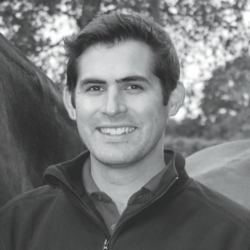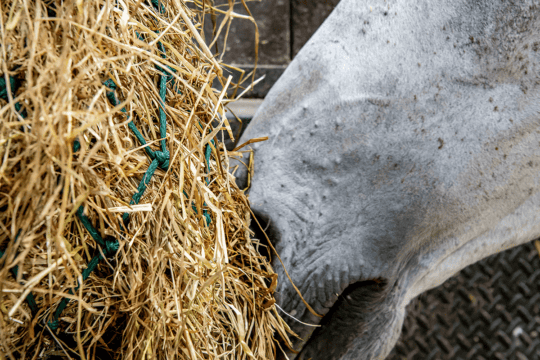Featured Professional
Your horse’s respiratory system is a complex, delicate piece of equipment that’s vital for his survival, as vet Jamie Prutton, from Liphook Equine Hospital, explains
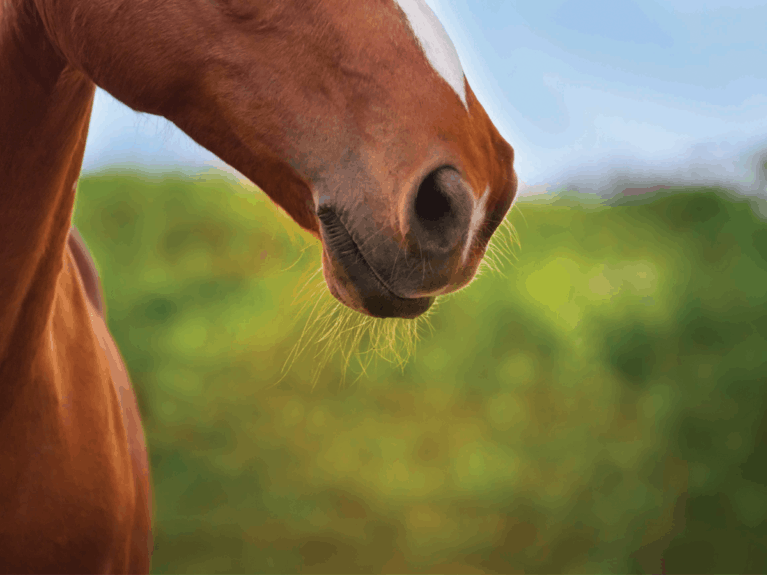
Your horse’s respiratory system works tirelessly to supply him with oxygen and it functions without him even having to think about it. Although from the outside it only seems to fill his lungs with air, what goes on behind the scenes is much more complicated.
The system’s most important job is to supply your horse’s body with oxygen, which is essential for all cell functions, and remove carbon dioxide, which is a waste product that has to be rapidly removed. But this isn’t all it does. It also protects your horse from disease and allergens, provides a sense of smell and enables him to cope with the demands of intense exercise.
The structure of your horse’s respiratory system
Your horse’s respiratory system can be split into two areas – the upper respiratory tract and the lower respiratory tract. The upper area includes the following structures…
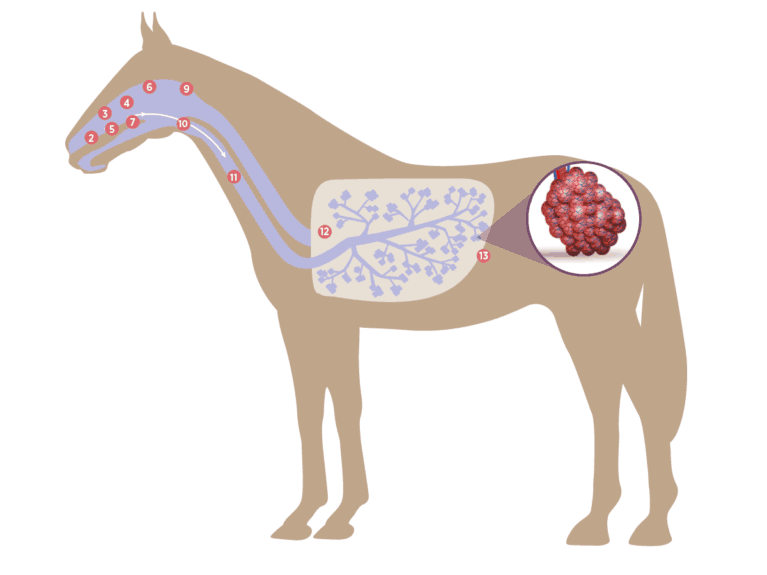
1. The nostrils (or nares) are the start of the respiratory tract and on both sides there are false nostrils (alar folds) that sit at the top of each nostril. These are involved in expanding your horse’s nostrils when he breathes in, as well as filtering some of the larger debris out of the air. As the air progresses further into his nostrils, the hairs inside them remove successively smaller pieces of debris.
Did you know? Horses are obligate nasal breathers, which means they are unable to breathe through their mouths. This is because the epiglottis completely separates the oral and nasal cavities.
2. His nostrils are separated by the nasal septum, which runs all the way back to the larynx.
3. Within each nostril there are coils of bone called turbinates that are covered by a mucous membrane. They act to partially warm and humidify the air that’s breathed in, and help to filter out remaining debris in the air.
4. At the back of the nasal passage there is an area rich in nerve endings called olfactory receptors that allow your horse to smell. These nerves go through the skull and straight into the brain.
5. The vomeronasal organ is also involved in smell and it’s located in your horse’s hard palate. When you see a horse performing the flehmen response (lifting his top lip in response to a smell) this is to force pheromones and other smells over the vomeronasal organ.
6. There’s a complex system of sinuses within your horse’s skull, including the frontal, maxillary and sphenopalantine sinuses, and these reduce the weight of it but allow it to remain strong.
7. The bottom of the nasal passage is initially made of the hard palate, then further back, as it enters the pharynx, it becomes the soft palate. These palates separate the oral cavity from the nasal cavity.
8. The epiglottis sits on top of the soft palate, and separates the oral and nasal cavities. The oesophagus sits next to the trachea and when your horse swallows food, it moves into a common area between the nasal and oral cavities called the oropharynx. When food is in the oropharynx, the epiglottis lifts up, briefly covering the trachea to protect your horse from breathing food in and helping to direct food into the oesophagus.
9. On either side of the pharynx sit the guttural pouches. These are an enlargement of the eustachian tube that connects the middle ear and the back of the nose in humans. They generally have a capacity of 300-500ml, and a large number of essential nerves and blood vessels.
10. The pharynx leads to the larynx, which consists of the arytenoid cartilages (involved in opening the larynx during inspiration and closing it during swallowing), vocal cords (for vocalisation), and numerous other muscles and cartilaginous structures.
The lower respiratory tract consists of the following structures…
11. The trachea, or windpipe, allows the passage of air between the nasal cavities and the lungs. It’s surrounded by cartilaginous rings that prevent it collapsing. The lining of the trachea is made up of cells that have multiple cilia (small hairs), which act as a transport system to move mucous, debris and any fluids from the lungs up to the pharynx, where they are then swallowed or snorted out.
Did you know? During exercise your horse breathes in time with his stride, because his abdominal and skeletal muscles help increase air movement.
12. Within the lungs, the trachea splits into two bronchi. The bronchi then branch out repeatedly, becoming bronchioles, and at the end of the bronchioles are the alveoli. Alveoli are small sacks that have very thin walls, allowing oxygen to easily move through them into the blood and carbon dioxide to move from the blood to the air. Surrounding each alveoli is an incredibly dense network of capillaries that take the oxygen away and deliver carbon dioxide.
Did you know? A horse who is fit and well will have a respiratory rate of 8–12 breaths per minute. This can change if he becomes excited, hot, stressed or unwell, or during exercise.
13. The action of breathing is helped by the diaphragm, which is a muscular sheet of tissue that, when contracting, pulls away from the chest cavity causing a decrease in pressure, leading to air being pulled into the lungs.
Did you know? With some respiratory diseases, the diaphragm is unable to pull air into the lungs on its own, so the abdominal muscles are recruited to help. This creates what is known as a heave line along the abdomen.
The respiratory cycle
As blood arrives in your horse’s lungs, it’s replete of oxygen because his body has used it up and it’s full of carbon dioxide that has been produced by his body’s cells. This carbon dioxide is transferred from your horse’s blood into the air in his lungs, then expelled from the lungs as he breathes out.
As air is drawn into the lungs, oxygen is transferred into the blood, which then flows into the heart where it’s pumped around the body, delivering oxygen to tissues. While delivering oxygen, the blood removes the carbon dioxide from the tissues and takes it back to the lungs, where the cycle begins again.
Common respiratory problems
Because your horse’s respiratory tract is a complex piece of equipment, problems can occur at virtually any point along it. Many issues are associated with infection or allergies, but they can be caused by physical or neurological abnormalities. Common respiratory problems include…
- infection. Respiratory infections can be bacterial, however, many are caused by a virus, such as influenza.
- dorsal displacement of the soft palate (DDSP). This is quite common and occurs when the soft palate becomes displaced above the epiglottis, rather than sitting below it, leading to an obstruction in the respiratory tract. Often this will lead to abnormal respiratory noises as well as a decrease in performance.
- laryngeal hemiplegia or roaring. This is either caused by a weakness or a complete paralysis of the left arytenoid cartilage and vocal fold. The weak or paralysed structures deviate into the trachea and vibrate when the horse breathes in, leading to the roaring noise and a decrease in performance.
- recurrent airway obstruction (RAO) or inflammatory airway disease (previously called COPD). This condition is caused by an allergy, often to mould spores and dust, and it causes mucous production, inflammation and narrowing of the airways. Some horses have a similar reaction when turned out in the summer, and it’s thought to be caused by grasses and pollens. This is known as summer pasture associated recurrent airway obstruction (SPARAO).
- nasopharyngeal or tracheal collapse. This is an uncommon condition where the rings of cartilage around the trachea are unable to maintain its shape. It can be hereditary, or caused by trauma, infection or a mass.
- exercise induced pulmonary haemorrhage. This is seen frequently in racehorses as a nosebleed. It’s caused by blood vessels rupturing within the lungs during high intensity exercise. Although it doesn’t actually hurt the horse, it can have health implications for those affected.
- pneumonia. This is an infection of the lungs that causes inflammation of the tissues in the lungs and the alveoli to fill with fluid. It can be caused by many things, including bacteria, viruses and fungi.
- pleuropneumonia. This is infection of the lungs, and the cavity between the lungs and the ribcage. It’s often a secondary infection, but is also known as shipping fever as it can strike after horses have been travelling for long periods.
Keeping his lungs healthy
Reducing the stresses on your horse’s lungs will help to lower the risk of disease and there are many simple ways to do this…
- regular vaccination against equine influenza will reduce the chance of contracting the disease and reduce its severity if your horse does get it. Some people also choose to vaccinate against equine herpesvirus if their horse is going to stud or multiple shows every year
- feeding wet hay or haylage to reduce dust
- changing his bedding to one that’s low in dust – paper or dust-free shavings are good options. If your horse has a respiratory condition and is really struggling, then rubber matting alone may have to be used
- increase turnout, which will improve the quality of the air he’s breathing
- remove your horse from his stable when mucking out, as it can kick up a lot of dust
- soak dry feed to prevent dust being inhaled while he’s eating
- water dusty school surfaces before working your horse on them
- clean your horse’s stable, removing any dust or cobwebs
- isolate new horses on the yard for at least two weeks to ensure they’re not carrying any respiratory diseases
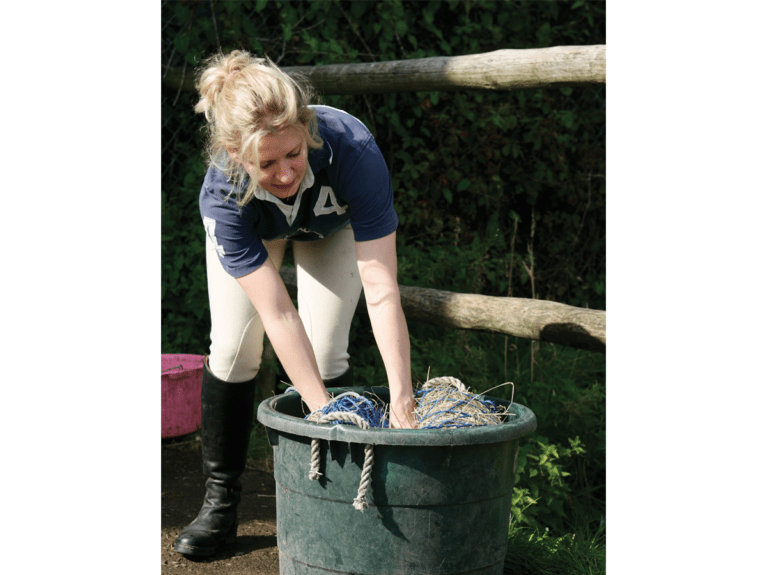
Did you know? Anything that increases the amount of dust or mould in the air will increase the chance that your horse will have an allergic reaction.




